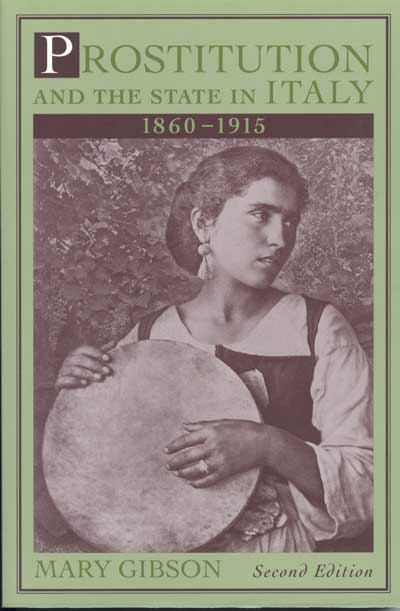
Prostitution and the State in Italy, 1860–1915
Second Edition
Mary Gibson
Prostitution and the State in Italy traces the history of prostitution from unification in 1860 to 1915. The Cavour Law of 1860 regulating prostitution was named after Camillo Benso di Cavour, the first prime minister of Italy. Cavour feared the spread of venereal disease into Italian society by soldiers fighting for unification and thus introduced measures he thought would serve as a means of protecting the public. Once peace returned, the laws were retained, as many agreed that they were necessary to insure health, order, and morality.
The law required all prostitutes to register with the police, live in licensed brothels, undergo biweekly health examinations, and be treated in a special hospital if they became infected with venereal disease. This strictly regulated system produced numerous records, which Mary Gibson has used to examine how the laws affected the lives of women engaged in the trade. Gibson builds social profiles of individual prostitutes that include level of education, marital status, age, and former occupation. Why the Italian government instituted regulation and why the policy persisted in spite of evidence of its failings are questions she addresses.
Early feminists and some democrats protested the laws as being unjust and promoting inequality of the sexes. Twenty-eight years after the law was passed, in 1888, challengers succeeded in getting it liberalized, but their triumph lasted only three years. In 1891 regulation returned and stayed in place until 1958, when the laws were finally overturned. Italy was not alone in formulating new legislation to control prostitution, but it was one of the last of the modern European nations to deregulate it.
Mary Gibson is a professor of history and the executive officer of the
Ph.D. Program in Criminal Justice at John Jay College of Criminal Justice
and the Graduate School, City University of New York.
|
Feb 2000 Criminology 288 pp. 6 x 9 |
|
| $27.95 paper 978-0-8142-5048-8 | Add paperback to shopping cart |
| History of Crime and Criminal Justice |


